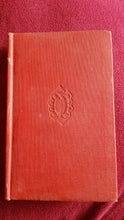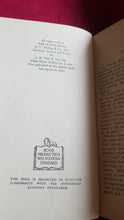Item Condition: Collectible; Good
1945 edition. Without Jacket.
EDITOR'S NOTE
"LA TULIPE Noire" first appeared in 1850. Dumas
was then nearing the end of his Monte Christo magnifi-
cences, and about to go into a prodigal's exile at Brussels.
It is said that he was given the story, all brief, by King
William the Third of Holland, whose coronation he did
undoubtedly attend. It is much more probable, nay, it is
fairly certain, that he owed it to his history-provider,
Lacroix.
An historical critic, however, has pointed out that in
his fourth chapter, "Les Massacreurs,” Dumas rather
leads his readers to infer that that other William III.,
William of Orange, was the prime mover and moral
agent in the murder of the De Witts. But against this
suggestion, we may quote Macaulay, who wrote: "The
Prince of Orange, who had no share in the guilt of the
murder, but on this occasion as on another lamentable
occasion twenty years later, extended to crimes perpe-
trated in his cause, an indulgence which has left a stain
on his glory.”
Whether Dumas owed it to Lacroix that he made the
stain seem still deeper in his story, it is impossible to say.
Paul Lacroix, alias the “Bibliophile Jacob," though not
an artistic assistant like Maguet, supplied Dumas with
historical colours and effects.
“I used," he wrote, “to dress his characters for him,
and locate them in the necessary surroundings, whether in
Old Paris or in different parts of France at different
periods. When he was, as often, in difficulties on some
matter of archæology, he used to send round one of his
secretaries to me to demand, say, an accurate account of
the appearance of the Louvre in the year 1600. ... I
used to revise his proofs, make corrections in historical
points, and sometimes write whole chapters." See Mr....






